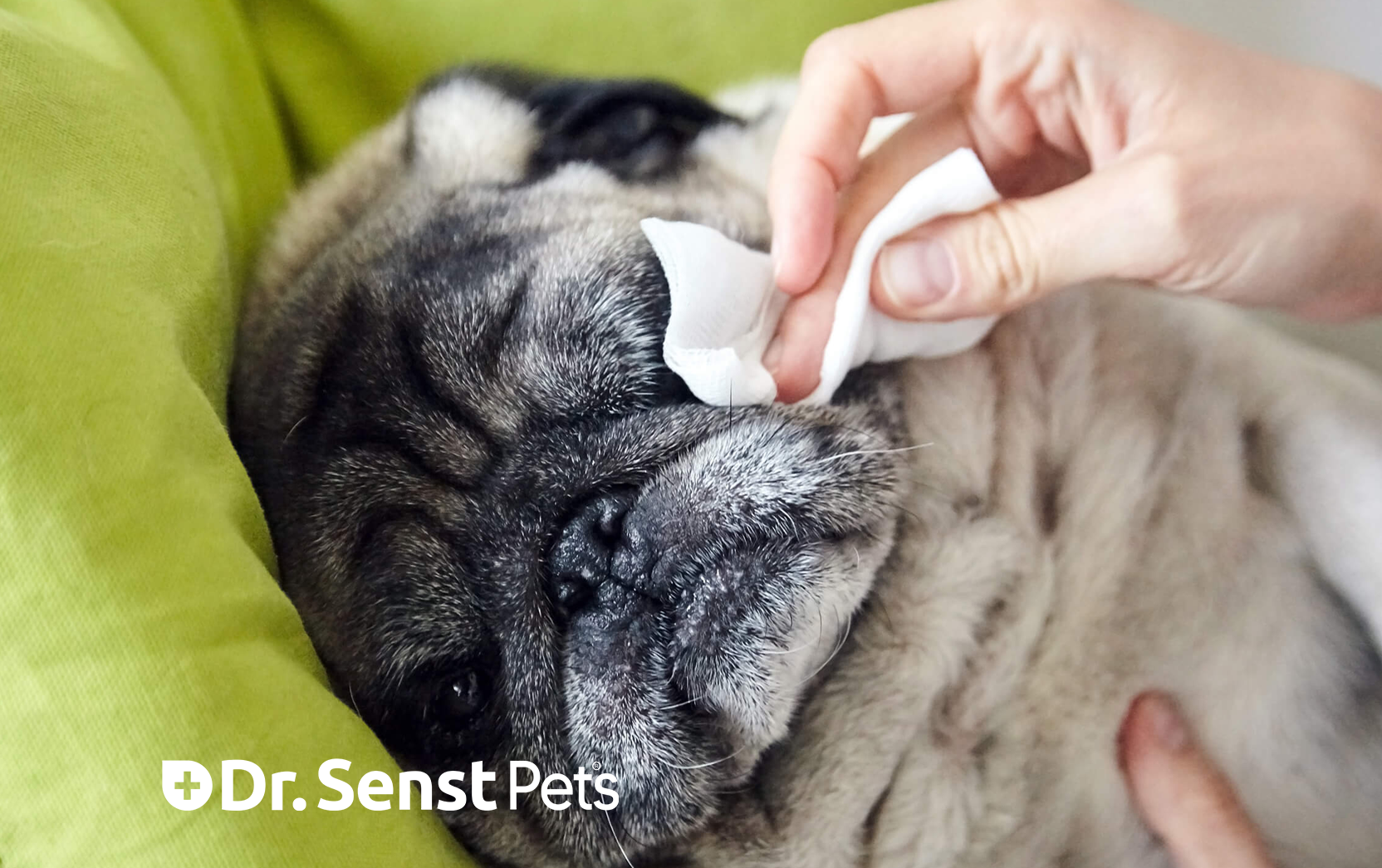
- by Dr.Thilo Senst
Quick Tips for Dog Eye Infections: Effective Home Care Practices
- by Dr.Thilo Senst
A dog’s eyes are sensitive organs, and various factors can lead to infections, including bacteria, viruses, foreign bodies, or even allergies. Eye infections can affect one or both eyes, and while some infections resolve quickly with care, others may require veterinary attention.
Bacterial and Viral Infections
Bacteria like Staphylococcus and viruses like canine distemper can trigger infections, especially in environments where hygiene is compromised.
Foreign Objects or Debris
Dogs that spend time outdoors may get dust, dirt, or plant matter in their eyes, leading to irritation and infection.
Allergies
Seasonal allergens or irritants like pollen, smoke, or household cleaning products can cause redness, swelling, and infection in sensitive dog eyes.
Scratches or Injuries
Minor eye injuries from playing or running through rough areas can result in infections if bacteria enter the wound.
According to the PDSA Pet Health Survey, around 30% of dogs treated in UK veterinary clinics annually present with eye problems, ranging from mild conjunctivitis to more serious conditions like ulcers or uveitis.
Recognising the symptoms of an eye infection early can help prevent the condition from worsening. Here are the most common signs to look out for:
Think of your dog's eyes like a camera lens. A camera with dust or debris on its lens produces blurred, low-quality photos. Similarly, if your dog’s eyes are irritated or infected, their vision and comfort will be compromised.
While it’s always best to consult a vet for persistent or severe eye infections, minor cases can often be treated at home with the following practices:
Cleaning your dog’s eyes gently with a sterile saline solution can help remove debris and discharge. Use a clean cotton ball or soft cloth for each eye to avoid cross-contamination.
Products like Dr. Senst Antiseptic Dog Eye Drops are formulated to provide relief from irritation and infections. Follow the instructions on the packaging and ensure the dropper doesn’t touch your dog’s eye to avoid contamination.
A warm, damp compress can help soothe irritated eyes and reduce swelling. Hold a soft cloth soaked in warm water against your dog’s closed eye for 5-10 minutes, being careful not to apply pressure.
Regularly wiping your dog’s face, particularly around the eyes, can help prevent debris and bacteria build-up. Use a damp cloth and be gentle around the sensitive eye area.
If your dog is pawing at their eyes, it could worsen the infection. Consider using a soft Elizabethan collar (also known as a cone) to prevent further irritation while the eye heals.
A survey by Blue Cross UK found that 25% of dog owners have treated their pets for eye infections using over-the-counter remedies, with saline solution being one of the most popular choices.
Addressing dog eye infections as soon as symptoms appear offers several benefits:
Prevents Worsening
Untreated eye infections can escalate, leading to more severe conditions such as corneal ulcers or even permanent vision loss.
Saves Time and Money
Early home care reduces the need for expensive treatments and procedures that may be required if the infection becomes severe.
Improves Comfort
Eye infections can be painful, and prompt treatment helps alleviate discomfort, allowing your dog to return to normal activities quickly.
Protects Long-Term Vision
Preventing recurrent infections can help preserve your dog’s vision and overall eye health.
1. Can I use human eye drops to treat my dog’s eye infection?
No, it is not advisable to use human eye drops, as they may contain ingredients that are harmful to dogs. Always opt for dog-specific products like Dr. Senst Antiseptic Dog Eye Drops.
2. When should I take my dog to the vet for an eye infection?
If the infection doesn’t improve within 48 hours of home care, or if you notice severe symptoms like excessive swelling, bleeding, or signs of vision loss, consult your vet immediately.
3. How can I prevent my dog from getting eye infections?
Regular cleaning of your dog’s eyes, keeping their face clean, and minimising exposure to allergens can help prevent eye infections. Also, make sure to keep their bedding and living environment clean.
4. Is it safe to use saline solution on my dog’s eyes?
Yes, a sterile saline solution is safe and effective for cleaning your dog’s eyes and reducing irritation. However, for severe cases, veterinary-approved treatments are recommended.
5. Are certain dog breeds more prone to eye infections?
Yes, breeds with bulging eyes, like Pugs and Bulldogs, or those with long hair around the eyes, like Shih Tzus, are more prone to eye infections due to their facial structure and genetics.
Home care practices for dog eye infections can be highly effective in managing mild symptoms and preventing further complications. Regular eye cleaning, using antiseptic eye drops, and keeping your dog’s face free of debris are essential steps to ensure your dog’s eyes remain healthy.
To support your dog’s eye health and treat minor infections effectively, consider using the following products from the Dr. Senst Pets range:
By taking quick action and using the right products, you can help your dog recover from eye infections swiftly and ensure their eyes remain bright and healthy for years to come.
![]()
Enter your details & download our comprehensive 50+ page printable Dr. Senst Pet Care Planner completley FREE! - keep track of all your pet’s needs, from medical history and training to vet visits, grooming, diet, and more!










Share:
Preventing Dog Dental Problems: Essential Tips for Pet Owners
Effective Dog Calming Techniques: Tips to Reduce Stress in Dogs